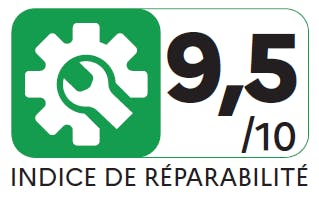France’s Fantastic Repairability Index

In the background of a tough year, people around the world have driven significant advancements in the Right to Repair. Voters in Massachusetts approved an initiative to open the data interfaces required to repair modern vehicles by an enormous margin. The greatest advancements though have been in Europe and especially France. Last week, the European Parliament passed a resolution endorsing the Right to Repair and calling for EU-wide implementation of a durability and repairability labeling scheme for consumer products, much like France’s incredible Repairability Index.

Starting on January 1st 2021 in France, a range of electrical and consumer electronics products will need to have repairability scores from 0 to 10 posted prominently next to their price tags, both online and in physical stores. That means that among others, Apple’s website in France is about to begin showing just how dismally difficult and expensive to repair their phones and computers are. The initial product categories this will apply to are:
- Washing machines
- Notebooks
- Smartphones
- Televisions
- Battery electric lawnmowers
- Corded electric lawnmowers
- Robot lawnmowers (yes, really)
The text of the decree and the general scoring parameters are detailed and dense, but are very well considered. Products are scored on:
- The availability of documentation around use, repair, and maintenance.
- How easy it is to access the internal parts that are most likely to wear down or go out of date, including whether uncommon tools or non-reusable adhesives or fasteners are used.
- What kinds of replacement parts are available, how long they are available for, and how long the delivery time is for them.
- How expensive the most important replacement parts are compared to the original price of the product.
- A few category-specific parameters, like access to OS and firmware updates for smartphones and laptops.
The criteria overall are really sensible. For example for smartphones, whether replacement batteries and displays are available to repair shops and consumers, how long they are available for, how many steps it takes to get into the device to replace them, and whether proprietary tools or adhesives are required make up a significant chunk of the total score. This maps well to the major drivers for device replacement and generation of e-waste.
This is a brilliant regulation in that it leaves improvements in repairability directly to the free market. Product makers are free to choose to continue to make hard or impossible to repair products, and consumers are free to vote with their dollars (or euros) and instead buy easy to repair ones that score well on the index. We’re very interested to see how it plays out. Since France is rolling out the regulations on fairly short notice (much shorter than a typical consumer electronics development cycle), we’re likely to see some of the most popular products displaying concerningly poor scores early next year. On the other hand, companies like Fairphone who have emphasized repairability from the outset are going to gain well deserved visibility for their efforts. We’re excited about it at Framework too for reasons we’ll be sharing soon!
